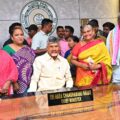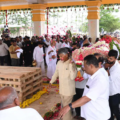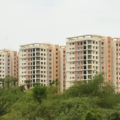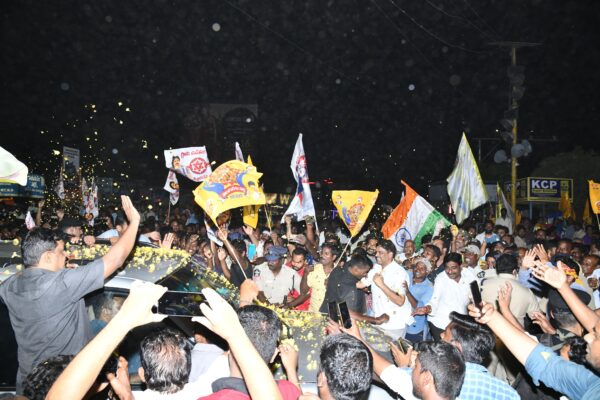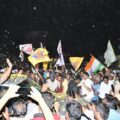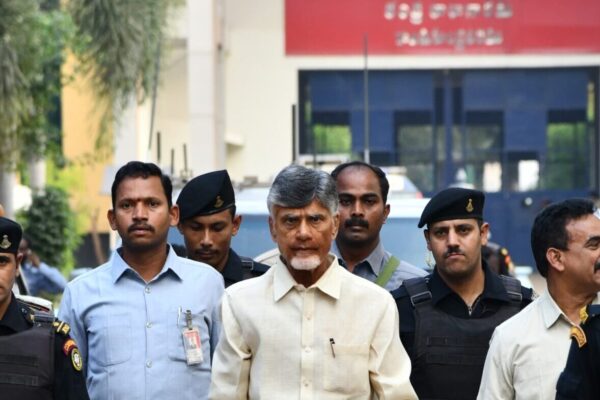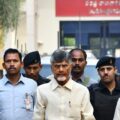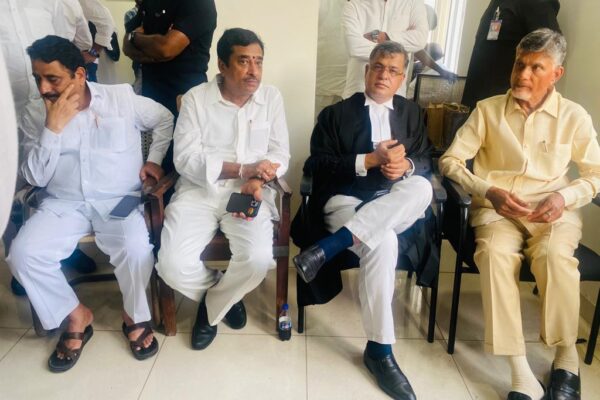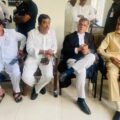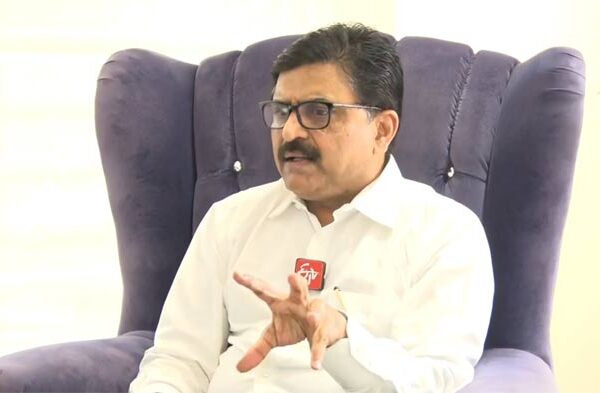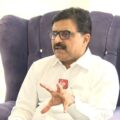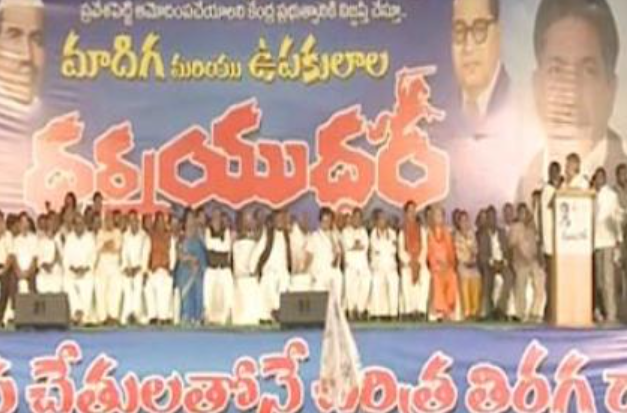
India Today | June 23, 1997
Trust N. Chandrababu Naidu to turn adversity into advantage. By deciding to divide the SCs into four categories, the Andhra Pradesh chief minister ensured that all 59 listed communities got a fair deal.
For 50 years the Malas had cornered most of the reservations in education and employment, depriving the Madigas, who account for about 47 per cent of the SC population, of their share.
Naidu has now worked out new quotas: Madigas 7 per cent, Malas 6, Rellis and Adi-Andhras 1 per cent each. The opportune moment came last week. Thousands of Madiga Reservation Porata Samithi members descended on Hyderabad on June 6 after a two-month, 1,060 km march from Naidu’s native Naravaripalle village.
***
‘The Madigas of Andhra Pradesh have every reason to rejoice …’
Akhileshwari | Deccan Herald | June 8, 1997
The Madiga community among the Scheduled Castes in Andhra Pradesh is rejoicing at its historic victory in getting the 59 sub castes among them categorised according to their population size, as in the case of BCs. While these categories will apply for education and job reservations only, it nevertheless is a step that will set right a historic injustice which clubbed SCs together into a mass, rather injudiciously, that saw the majority Madiga community handicapped in the face of competition from the more advanced and educated Mala and Adi Andhra communities.
Chief Minister N. Chandrababu Naidu announced the categorisation of the SC sub castes on Thursday even as the Madiga Maha Padayatra was moving inexorably towards Hyderabad to lay siege to his house to register their demands. The three-year old struggle of the Madigas acquired a sense of urgency with the decision to launch the 1,000-odd km trek to the city to highlight their demands. While predictions were being made of a blood bath between the two major SC communities, the Madigas and Malas, and fears of playing into the hands of their class and caste enemies were voiced, not a single violent incident took place in the 52 days of the padayatra by hundreds of Madiga youth as they trekked in scorching summer heat across sleepy villages, rested in huts, and gave a sense of pride to the community for raising their voice against an injustice that had been conveniently made light of or swept under the carpet.
Said Dr P. Muthiah, director of the SC & ST Cell in Osmania University, ‘The issue was hanging fire for the past ten years … it was boiling … the decision is a huge victory … as long as there is injustice there will be a cry for justice,’ he told Sunday Spotlight. Asked why the issue came to the fore and caught the imagination of the Madigas at this juncture, he said awareness and consciousness had spread immeasurably among the SCs. It was a happy coincidence that conscientisation of the masses about the injustice coincided with the emergence of a sincere, committed and powerful leadership to take charge of and lead the movement. ‘It is astounding how Madigas have been made aware, how they articulate this injustice … thousands of them are articulating it, in every basti, in every Madiga wada, In every village,’ he said.
The long march
The Madiga Maha Padayatra was part of the strategy adopted to mount pressure on the government to accede to their demand. Begun on April 14 in Chief Minister N. Chandrababu Naidu’s village of Naravaripalli in Chittoor district by presenting their demands to his octogenarian parents, the padayatra of Madiga Dandora passed through seven districts, covering 1,000-odd km. The Dandora youth, dressed in dark blue trousers and shirts, holding a stick in the hand, walked at least 20 km a day, stopping in at Madiga basti to rest in the night. Everywhere they were received with the beating of drums, the traditional job of Madigas.
Krishna Madiga, the 30-year old convener of the Madiga Reservation Struggle Committee, was trying to rest after the long trek in Hyderabad on Thursday night, even as he was being congratulated on his victory (earlier in the day the chief minister had announced the acceptance of the categorisation). In an interview to Sunday Spotlight he pointed out that the Dandora struggle had been peaceful and despite the fact that his ‘army’ of followers were young and angry they had not allowed their emotion to get the better of them. ‘In the three-year long struggle, we did not cause destruction worth even three rupees,’ he said. As for his achievement, he said he had achieved it without having to wage a war or take the help of a political party. ‘Our weapon is not a gun but the drum,’ he said about the instrument that is associated with the Madigas in these parts since they wield the drum on all occasions such as birth, death and marriages. ‘We will beat our drums so loudly that the ruling classes would have to heed us or their ear drums will burst,’ he said.
Krishna Madiga likes to compare the Maha Padayatra with the Long March of Mao and the Dandi March of Mahatma Gandhi to mobilise and fight for social justice as enunciated by Babasaheb Ambedkar. The aim of the agitation, he said, was to remove the social disparities among the various sections of the Dalit community. Apart from demanding justice, the movement was aimed at emphasising the fundamental rights of all persons.
The padayatra had served twin purposes: conscientise the Madigas about the injustice heaped on them for the past 50 years by a skewed reservation policy, and also create awareness on the teachings of Babasaheb Ambedkar. The march was to have ended with about 20 lakh Madigas laying siege to the chief minister’s house but the police did not give permission for such a huge congregation and with the help of the High Court, the Dandora got permission to assemble only on the city outskirts and take only a delegation to the chief minister’s house to hand over a memorandum.
Krupakar Madiga Ponugoti, state co-convener of the Madiga Reservation Struggle Committee, termed this as ‘state’s caste discrimination’ which was akin to keeping the SCs out of the village because of their caste. ‘Our struggle has been for human dignity, our fundamental rights and it has been peaceful and yet we have been treated so shabbily,’ said the 27 year-old highly articulate activist who never went to school. The Madigas are traditional cobblers. In fact, the Madiga Dandora believes, today the Madigas’ economic situation is by far the worst in the past seven decades, if not more.
The Malas, on the other hand, who were marginal landowners or landless labourers, got access to education under the influence of Christian missionaries and since then there has been no looking back. Malas perhaps made the best use of the reservation policy. Today, after 50 years of reservation policy, Malas are predominantly present in the reserved slots, whether in schools and colleges or government or in elected positions, in accessing and availing government’s economic betterment programmes, housing and so on. Malas however question both the Madiga claim on majority in population and the dominance of Malas in taking reservation benefits. They quote ‘unpublished’ figures of the 1991 census and claim that Madigas, contrary to their claims, constitute only 46 per cent, with the other communities constituting 54 per cent. As for the claim of Malas appropriating SC reservation in jobs, they point out that as many as 30,000 posts in the government have been lying vacant for want of qualified candidates. If Malas were all that educated, surely so many posts would not have been vacant.
An immediate gain for the Madiga will be in this very area: the government has decided to fill up the vacant posts which had been held up by the High Court pending the decision on the SC categorisation. What about the deep divide brought about between Malas and Madigas? While some workers point out that they were never united on any issue other than on untouchability, the leaders however speak differently. They say far from being divided, the categorisation brings about unity. Dr Muthiah improvises on Dr Ambedkar’s saying that there can be no equality without liberty: ‘There can be no unity without equality and liberty,’ he said. The Dandora warriors are as enthused by the response they have got from neighbouring states to their unique struggle as they are disheartened by the indifference of the media to the first successful people’s struggle in a long time. Madigas from Karnataka, Maharashtra, Tamilnadu and Kerala have participated in their meetings in solidarity. Categorisation in AP is bound to set off similar demands in other states.
